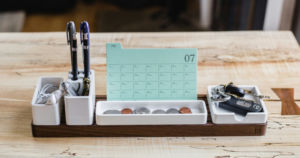Resisting the urge
It’s natural. You’ve bought an investment property that’s a bit ‘tired’ – and you immediately see things you could do to improve it.
You might want to get rid of the blinds, rip up the carpets, or feed that old dishwasher to the tip.
But the First Law of Renovation is that if you start off small, the project will quickly (and inevitably) get bigger – and you’ll throw out far more than you wanted to.

Why some renovations might not ‘add value’
While it’s easy to get carried away – it’s also a mistake.
This is because a depreciation schedule for an older property places a value on each taxable item. For example, let’s say the values look like this:
-
carpet – $700
-
blinds – $700
-
curtains – $370
-
stove – $750
-
dishwasher – $500
-
light fittings – $450
-
washing machine – $400
-
total – $3,870.
For a taxpayer on a 33% tax rate, their tax refund on these items is $1,277. Essentially, throwing these items away is the same as throwing money away.
These items normally depreciate over a number of years. But as they’re being scrapped, the full tax deduction is available in the first year.
How to ensure you don’t miss these tax allowances
Before you throw anything away, your first step is to make sure you get a depreciation schedule written up.
Track all the items you dispose of and tell your accountant. They’ll claim these tax deductions for you in your first year of ownership.
Once the renovation is complete, get another depreciation schedule done and claim depreciation on all the new items. It’s that simple.
Final tax tips
Don’t claim new items in full if they should be depreciated – it’s a sure-fire way of getting into strife with the Australian Tax Office (ATO).
It’s also important to remember that only some parts of a renovation can be claimed as depreciation.
For example, if you repair an item or paint the walls, you can generally claim that tax deduction in year one. But if you replace an item, you must depreciate it over 40 years – or its effective life.
Another example is new built-in cupboards. As they are considered part of the building, they are depreciated over 40 years.
On the other hand, replacing carpet because of a hole is not considered a repair. In this case, it’s depreciated over 10 years.
For more information on what you can claim, head to the ATO’s website, opens in new window.
Source: NAB
Reproduced with permission of National Australia Bank (‘NAB’). This article was originally published at https://www.nab.com.au/personal/life-moments/home-property/invest-property/depreciation-renovation
National Australia Bank Limited. ABN 12 004 044 937 AFSL and Australian Credit Licence 230686. The information contained in this article is intended to be of a general nature only. Any advice contained in this article has been prepared without taking into account your objectives, financial situation or needs. Before acting on any advice on this website, NAB recommends that you consider whether it is appropriate for your circumstances.
© 2024 National Australia Bank Limited (“NAB”). All rights reserved.
Important:
Any information provided by the author detailed above is separate and external to our business and our Licensee. Neither our business nor our Licensee takes any responsibility for any action or any service provided by the author. Any links have been provided with permission for information purposes only and will take you to external websites, which are not connected to our company in any way. Note: Our company does not endorse and is not responsible for the accuracy of the contents/information contained within the linked site(s) accessible from this page.


